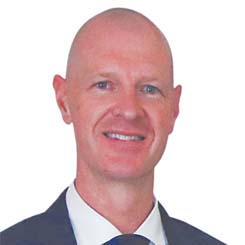Sports
Spotlight or sideline? Nepali sport’s social media dilemma
The pressure to constantly perform online also brings mental strain.
Matt Ross
In the digital age, professional athletes are no longer just performers on the field—they’re also creators, influencers, and storytellers. Around the world, established and emerging sporting stars are curating their lives online, turning training sessions and post-match celebrations into content for millions of followers. While this trend brings exposure and commercial opportunity, it also invites a question: Are athletes now spending more time perfecting their image than perfecting their performance?
As Nepali athletes chase visibility in a crowded and competitive world, many are increasingly turning to social media not only to share their journeys—but to shape themselves.
As coaches, we search for athletes with grit and resilience who will push their physical and mental boundaries. We know that professional sport is ruthless, cold and unforgiving. An athlete losing sleep to curate content, check comments or respond to DMs will be overtaken by hungrier, more committed teammates. We also research potential recruits to assess their compatibility with the existing team dynamic. In the men’s national football team, we embrace honesty, hard work and humility as our core values. Unfortunately, these values are not easily conveyed in a ‘highlight reel syndrome’ world that encourages a curated self and a social media facade.
While this new world presents challenges to coaches and administrators, the appeal for the athlete is obvious. A strong online presence offers a voice and a form of economic empowerment. An athlete can build a fanbase, attract sponsors, and give a sense of control over their narrative—especially in a local sporting system where salaries are low, and support can be inconsistent.
Yet, the growing emphasis on developing a digital presence has not come without consequences. Coaches and established athletes increasingly report concerns that younger players are more invested in “going viral” than going the distance. Training schedules are adjusted for content shoots. Recovery sessions are live-streamed. In some cases, the pursuit of likes has created a false sense of progress—measured in followers, not minutes played.
The pressure to constantly perform online also brings mental strain. Negative comments, public scrutiny, and the demand for constant engagement can take a toll on athletes’ well-being, especially among teenagers navigating fame without positive support systems. Even at a hormonal level, our bodies are flooded with dopamine while scrolling for new content, or adrenaline in anticipation of the reaction to our latest post. Our top athletes should feel this after a tough workout, achieving a personal best or winning the match. Our brains cannot recognise the difference, and subconsciously we gravitate towards the easier path to reward and pleasure: social media.
Nepal has no shortage of sporting talent. However, we do lack an athlete-centred environment, where the needs of our sportspeople are the priority. They need guidance to make wise choices, find a sport-life balance and learn to say no. No to people treating them like commodities for manipulation and no to chasing validation and external approval on social media.
Our athletes have the ability to shine on the world stage. Let’s all work together to encourage them to think that true greatness is built offline, in the quiet grind away from the spotlight.




 19.05°C Kathmandu
19.05°C Kathmandu













.jpg&w=300&height=200)

